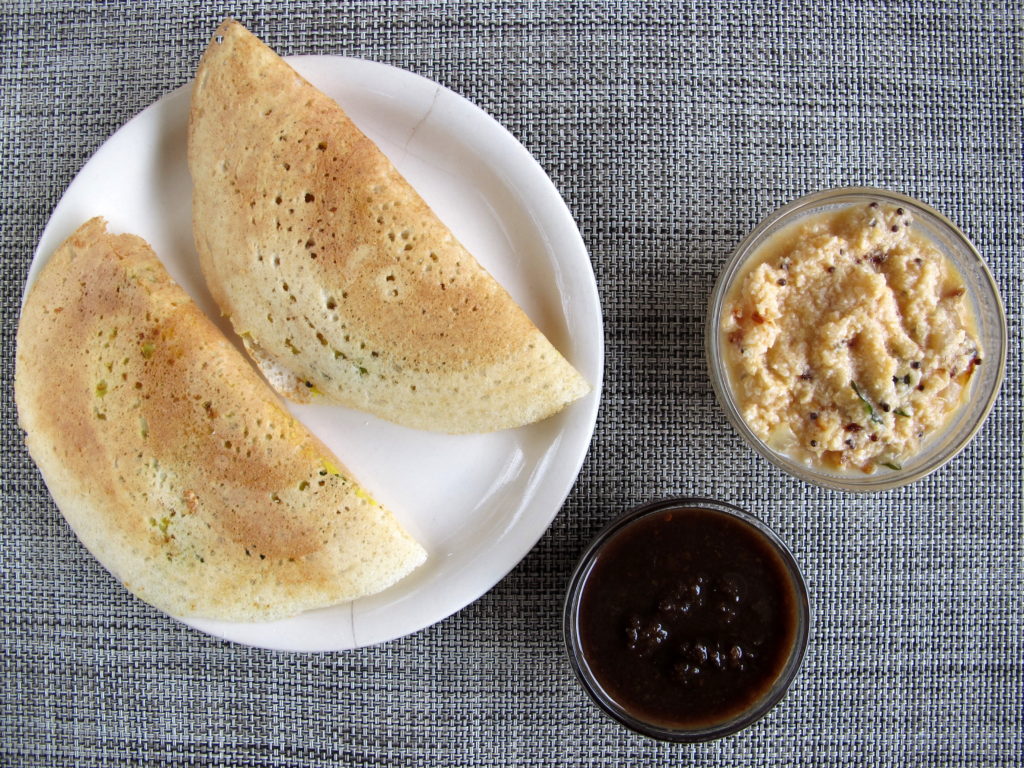
Dosa and Idli, the “Indian Pita”, are two basic dishes common in south India. Both Dosa and Idli are serverd for breakfast or any other light meal during the day. Dosa is actually a large, thin and crunchy crepe with a slightly sour taste and it is usually filled with some spicy vegetable puree and served with chutneys and Sambar (a thick lentil soup). Idli is actually prepared from the same batter but instead of being cooked as a crepe the Idlis are steamed and so the Idli is thicker and soft. Idli is served with practically everything… curry, sambar, chutney, podi (spice mix with oil) and many more.
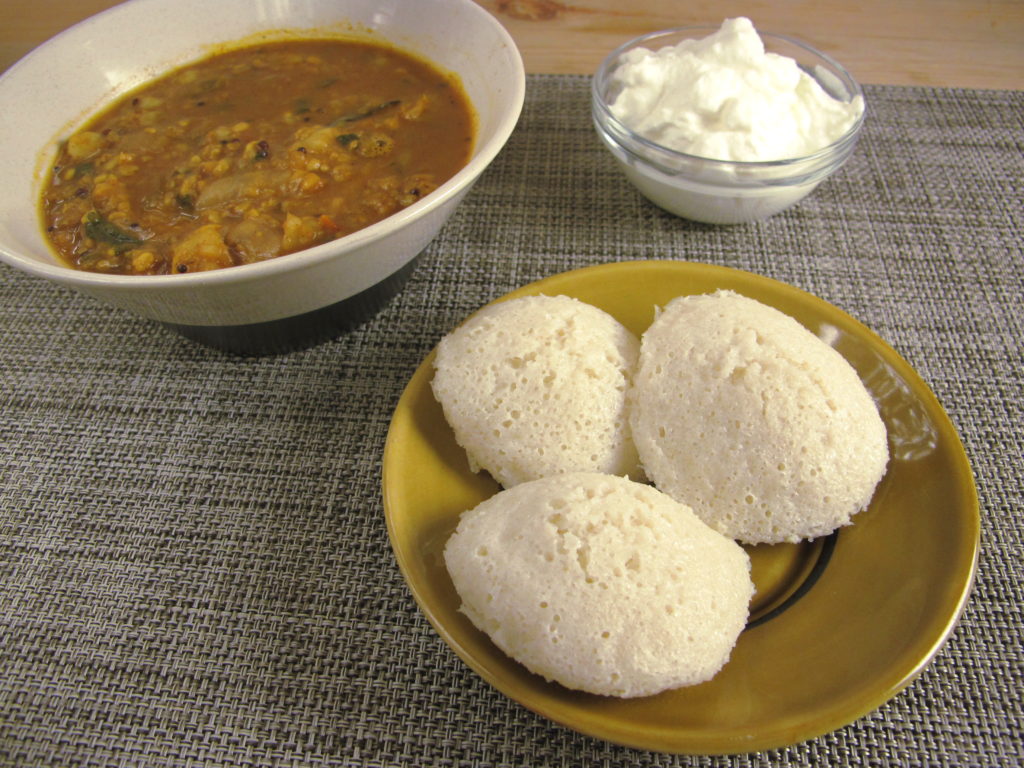
Dosa is traditionally prepared in a large and heavy skillet called Tava or Tawa, which is very similar to a crepe skillet in which you put a little batter and spread it into a thin large circle. The Idli is cooked in a special Idli dish which has small round indents in which you pour the batter. The Idli dish is placed in a steamer and steamed for a few minutes.
The basic batter for Dosa and Idli is made of rice, urad dal (some type of lentil, details below) and fenugreek seeds. It’s also possible to add Toor Dal (another type of lentil, details below) and/or Poha, which is flattened rice. The procedure for making the batter include soaking of the rice and lentils, grinding into smooth batter and fermenting.
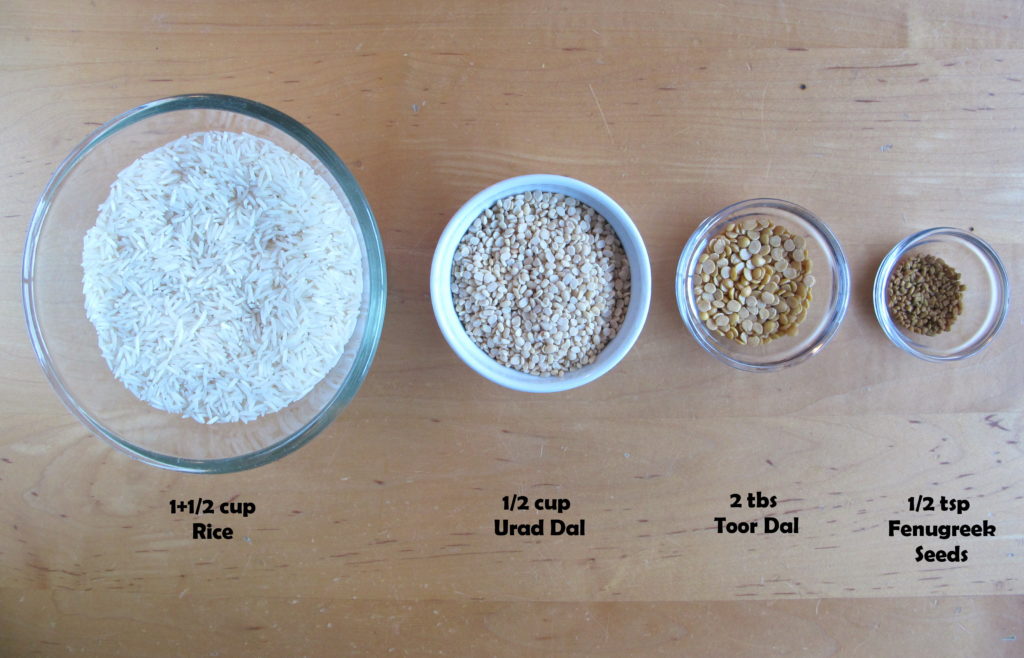
The batter preparation might sound labor intensive but it is actually extremely simple and doesn’t require a lot of work. Once you put your hands on an Dosa/Idly batter you have your solution for quick and healthy meals for the whole week! The batter can be kept for a week in the fridge and at any moment you can assemble a great meal in a few minutes. You won’t find an Indian grandma without her batter in the fridge and I even noticed that in lots of blogs out there are missing a recipe for the Dosa/Idly batter, I guess it is just taken for granted you already have THE BATTER in your fridge and you’re just looking for serving suggestions.
It’s possible to find in Indian grocery store an instant mix for Dosa and Idli but I never tried it so I can’t say if it is good enough. Anyway, making the batter is super easy so no need for shortcuts.
Prep time: 20 minutes (accumulative)
Idli cooking time: 8-10 minutes
Dosa cooking time: 5 minutes
Ingredients (~1 liter of batter, about 20 Idlis or small Dosas)
- 1+1/2 white rice
- 1/2 Urad dal
- 2 tbs Toor dal (optional
- 1/2 tsp Fenugreek seeds
- 1 tsp salt
Directions
Mix Urad dal, Toor dal and Fenugreek seeds. Wash the rice and the lentils mix separately, make sure you wash it for at least few minutes in a strainer until the water comes out clear. Soak the rice and the lentils separately for 6 to 8 hours.
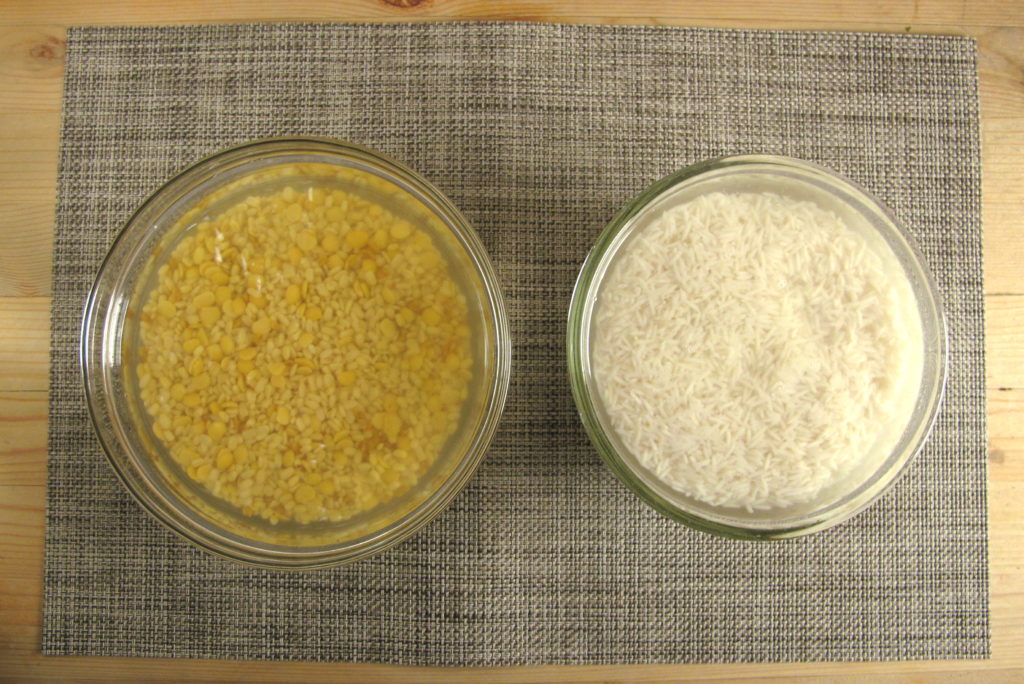
Strain the rice and lentils (keep the soaking water! will use them in a minute) and place in a good blender. Some people blend the rice and lentils separately but I skip it and blend them together and it turns out great. Grind the rice and lentils on high speed until the batter will become smooth and creamy in texture. It will take about 8 to 10 minutes. Add some of the soaking water during the grinding, only a little at a time so the batter won’t become too runny. For this amount I usually add about one and a half soaking water.
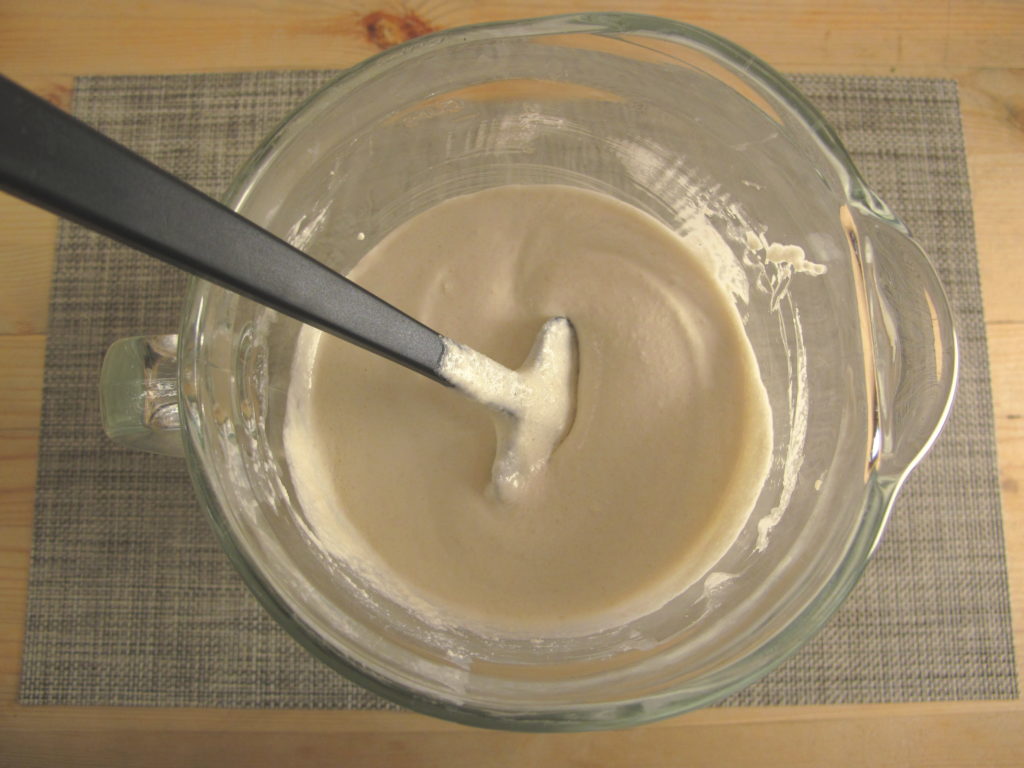
Once you get to the right consistency and texture place the batter in a large bowl or jug, add 1 tsp salt and mix with clean hands (indeed, with your hands, like your imaginary Indian grandma used to do! It actually helps the fermentation process later on). Cover the bowl and put it in a warm place. I usually ferment my batter in the oven after I heat it to 50 degrees and turn it off. While the batter is fermenting in the oven I occasionally reheat the oven to 50 degrees and turn it off.
The fermentation will take between 12 to 24 hours, for me it usually take 14 to 16 hours until it starts pouring out of the jug and making a mess in the oven. When the batter is 1.5 its original size it is officially ready.
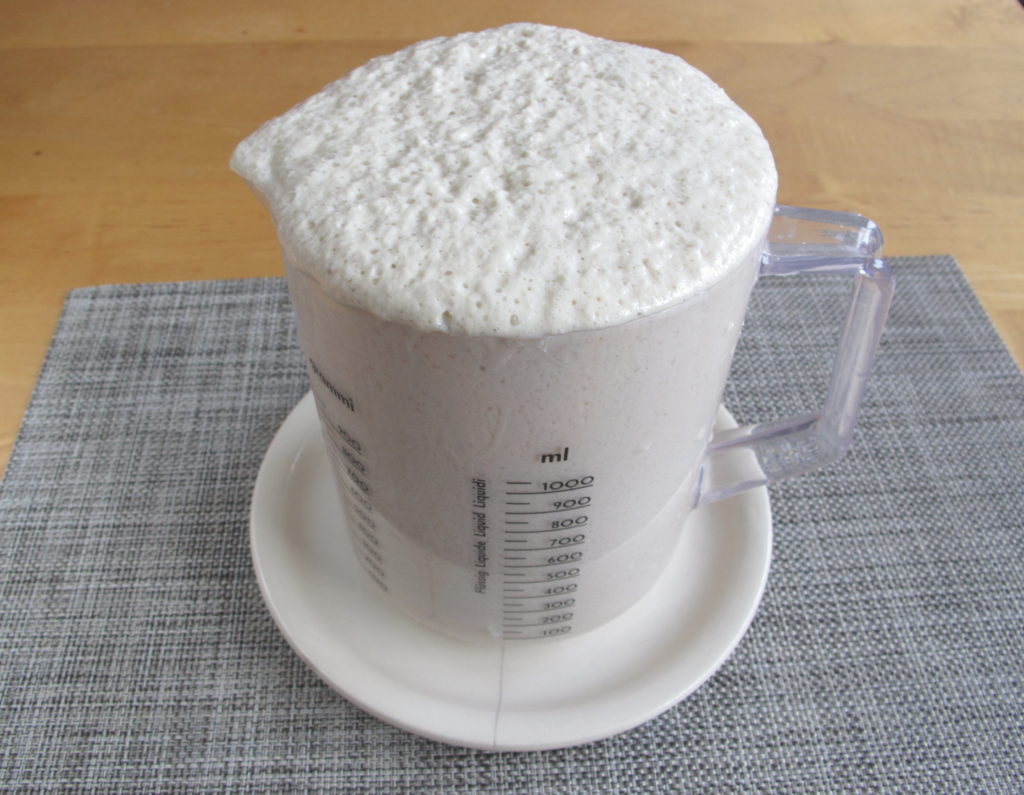
Your batter is ready! at this stage mix it gently (you can use a spoon now) to take some of the air out of the batter, add a little water if needed and store in the fridge to stop it from growing. You can use it immediately or keep in the fridge for up to a week. Please note that the batter at this stage should be pretty thin, thinner than a pancake batter.
The Dosa preparation
The Dosa is traditionally made in a large and heavy skillet called Tava or Tawa, which is practically the same as a crepe skillet. If you don’t have one don’t worry, you can use any other heavy skillet or even a small and cheap non-stick skillet, you’ll just get a smaller Dosa but the same amount of yumminess 🙂
Take a small amount of the batter with ladle (in a small skillet I use about 1/4 cup of batter), place it in the center of a hot and lightly greased skillet and spread the batter in a quick spiral-like motion, as can be seen in this video. It will be hard to spread the batter in case the skillet is too hot, so you can take some wet paper towel and quickly pass it on the hot skillet just before putting the batter. Wait for 2-3 minutes or until the Dosa starts to brown at the edges and in its thinner parts in the middle. You might also notice the edges will start to coming up. At this stage you can spread just a teaspoon of oil over the Dosa, turn it over, cook for few more seconds, fold in half and serve. Another option will be filling the Dosa directly in the skillet like you see in the picture below, then folding and serving. If you chose the second option the Dosa should be eaten as soon as possible since the filling makes it lose its crunch.
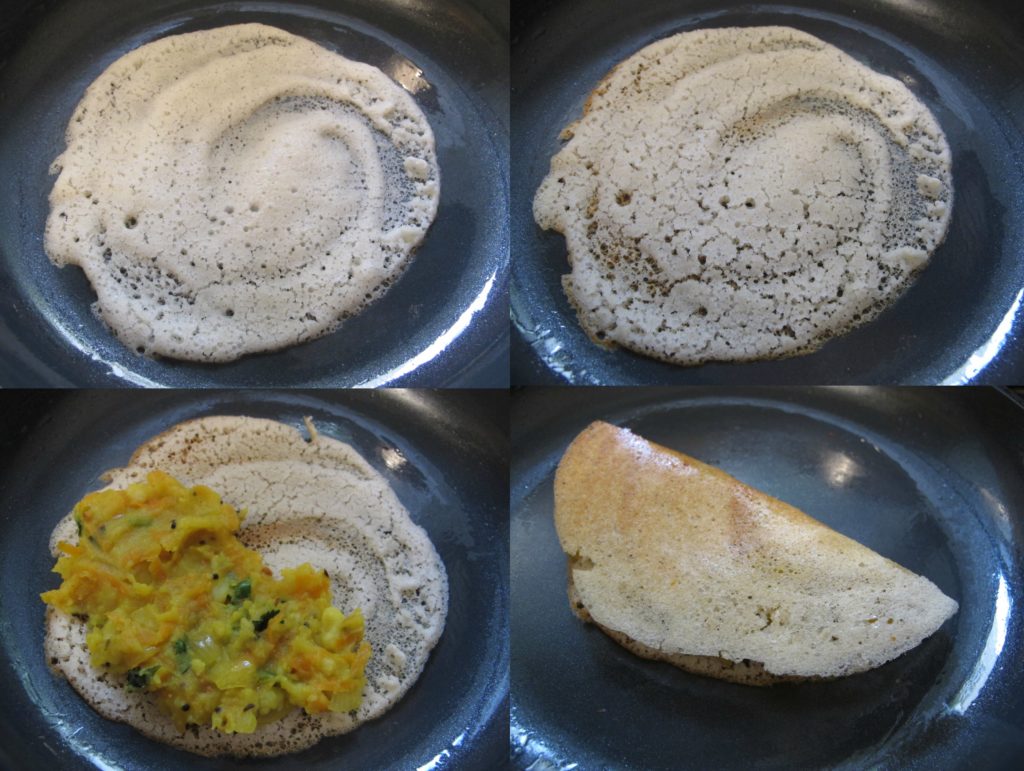
The most common filling for Dosa is called Aloo Masala and its basically a spicy potato puree (you can see it in the above picture, recipe is on the way!). It’s also possible to fill the Dosa with other vegetable purees and currys and sometimes people spread on the Dosa various sauces and spices in addition or instead the filling. The Dosa is traditionally served with Sambar, which is a thick and slightly sour lentil soup, and with coconut chutney.
Idli preparation
Idli is prepared from the same batter as the Dosa which is baked using steams. The result are delicious, fluffy and slightly sour little buns. If you got your Idli steamer you just need to lightly grease it, fill in the indents with batter and steam in a pot with some water for 8 to 10 minutes. No Idli steamer? don’t worry! you can also take some shallow bowl, place a greased baking paper inside it and a generous layer of batter on top of it, and put the bowl in a steamer for the same amount of time. You’ll get a large Idli which you can cut to “pizza slices” or just squares and server.
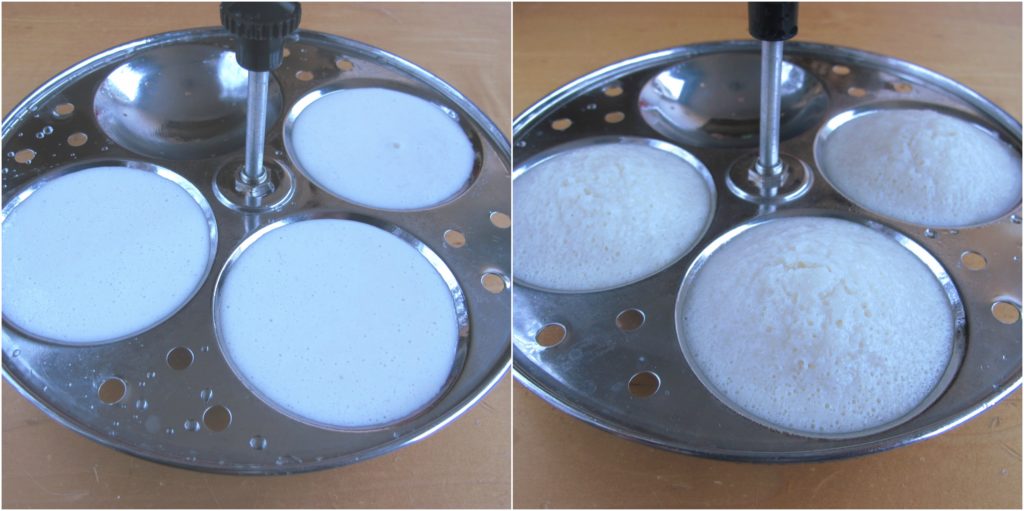
The Idli is traditionally eaten with Sambar and chutney. However it can be served with any type of Indian dish – Dal, curry, paneer or just with chutneys.
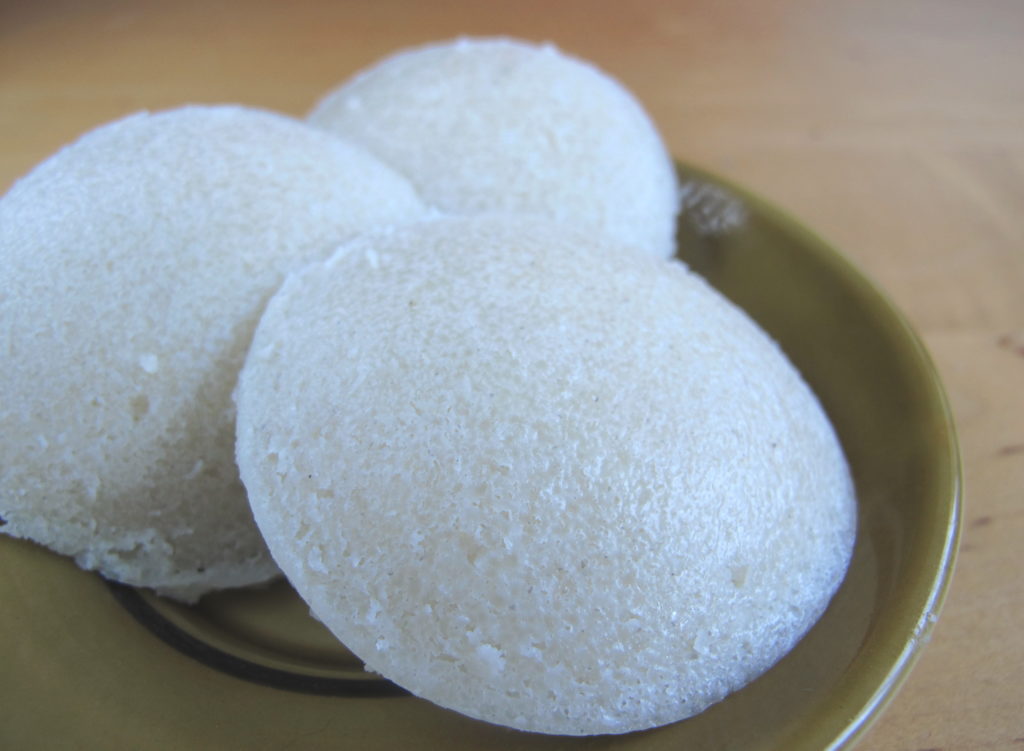
Comments and suggestions
- Fermentation. The fermentation process takes time, I noticed that usually in the first 12 hours nothing really happens and then it suddenly starts to grow rapidly. However, ask any Indian grandma and you’ll get her own secret tips for successful fermentation. . Some examples of the tips I’ve encountered – in the grinding stage add few tablespoons of cooked rice that was kept outside for the night, soak and grind with mineral water that don’t have fluorine, add 1/4 tsp yeast, grind the rice and lentils separately, add the salt after the fermentation, add the salt before the fermentation, use rice which was boiled and then dried, place in a large bowl with warm water, add some oatmeal during the grinding, add some yogurt during the grinding and many more tips and tricks… For me just a simple warm oven does the trick.
- Urad Dal is actually a small lentil which looks a lot like Moong bean but has a black skin and is white on the inside (vs. the Moong which is yellow inside). Here we use it without the skin and split in half.
- Toor Dal is actually pigeon pea, skin removed and split in half. The skinless pea has a yellowish color and looks a lot like yellow lentils.
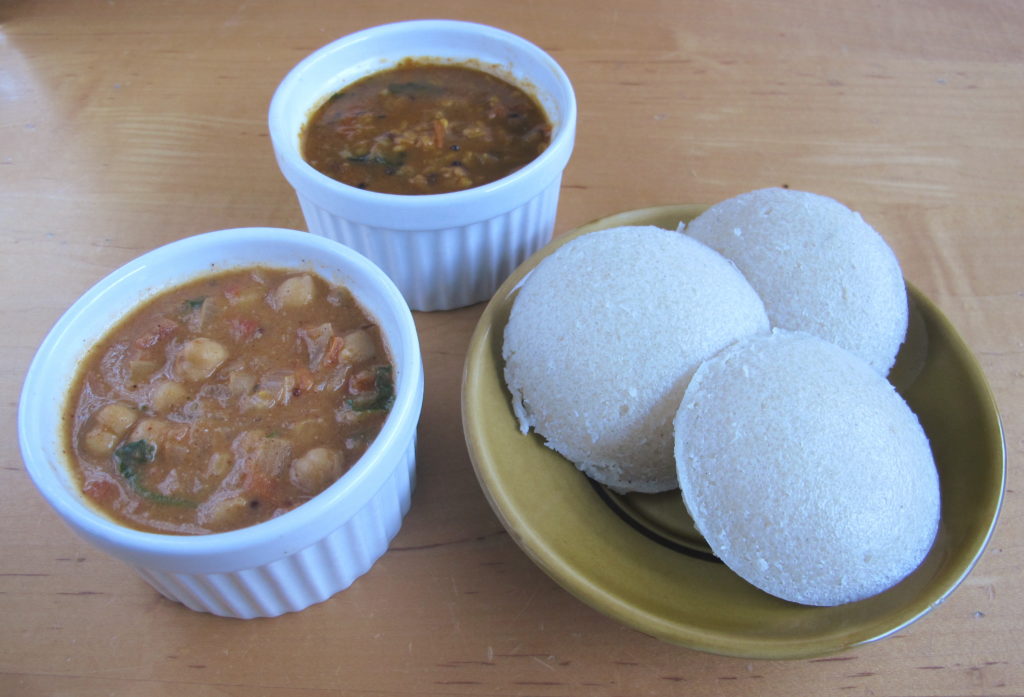
In short
Wash the rice and lentils thoroughly. Soak separately (rice in one bowl and other lentils in another) for 6 to 8 hours. Strain the rice and lentils (keep the soaking water) and place in a blender. Grind on high speed for 8 to 10 minutes until the batter and smooth and creamy. During the grinding add some of the soaking water (about 1+1/2 cups). Put the batter in a large bowl/jug, add 1 tsp of salt and mix with clean hands. Cover and place in a warm place for 12 to 24 hours. The batter is ready when it grows to 1.5 its original size. Keep in a fridge for up to a week.
For Dosa preparation take some of the batter in a ladle (1/4 cup for a small skillet), place in a warm and greased skillet, spread in a spiral motion, wait until it browns on the edges, add the filling, fold in half and serve.
For Idli preparation pour the batter in the indents of a greased Idli dish or in a shallow bowl covered with greased baking paper and steam in a pot with a little water for 8 to 10 minutes.



